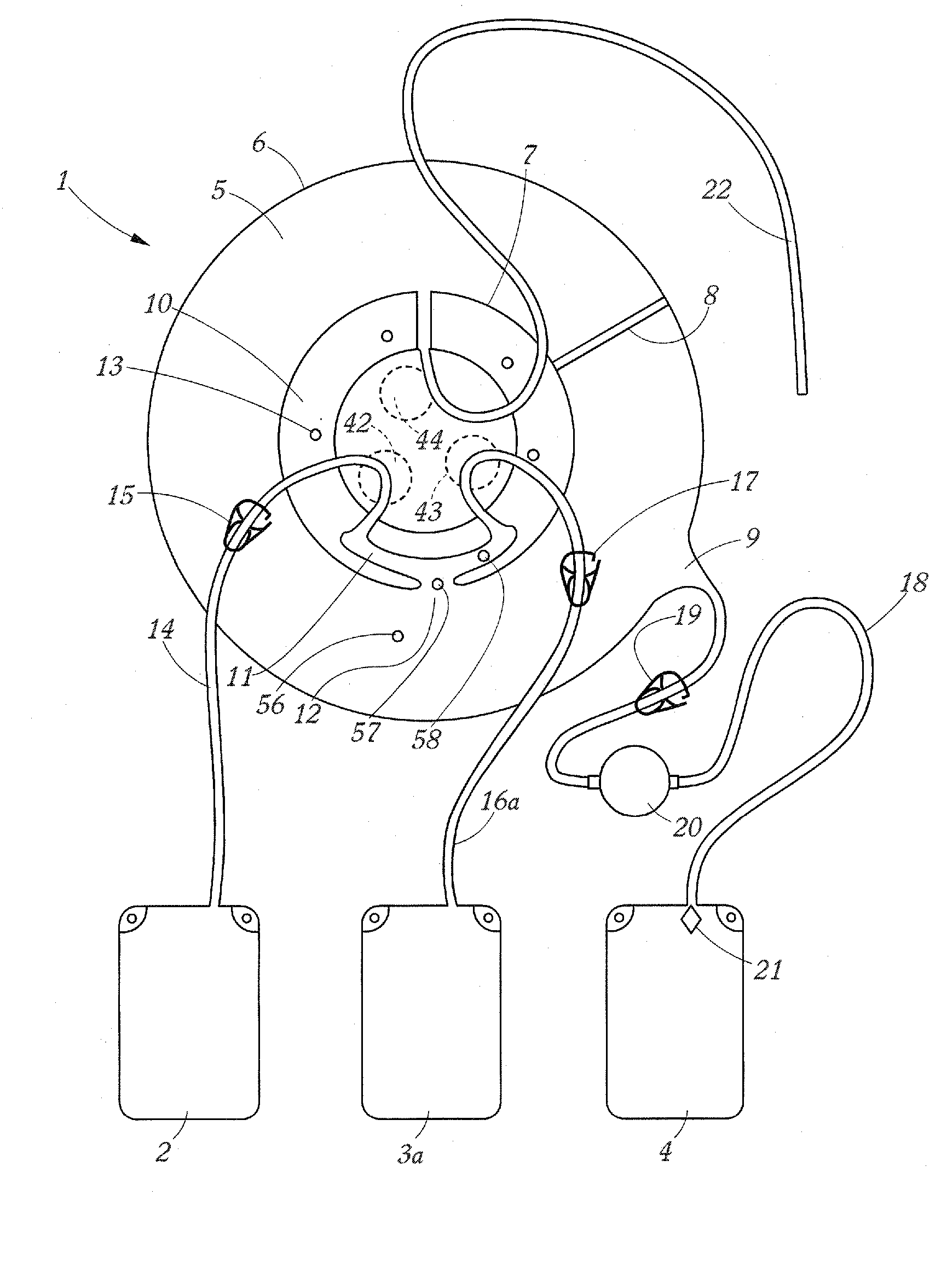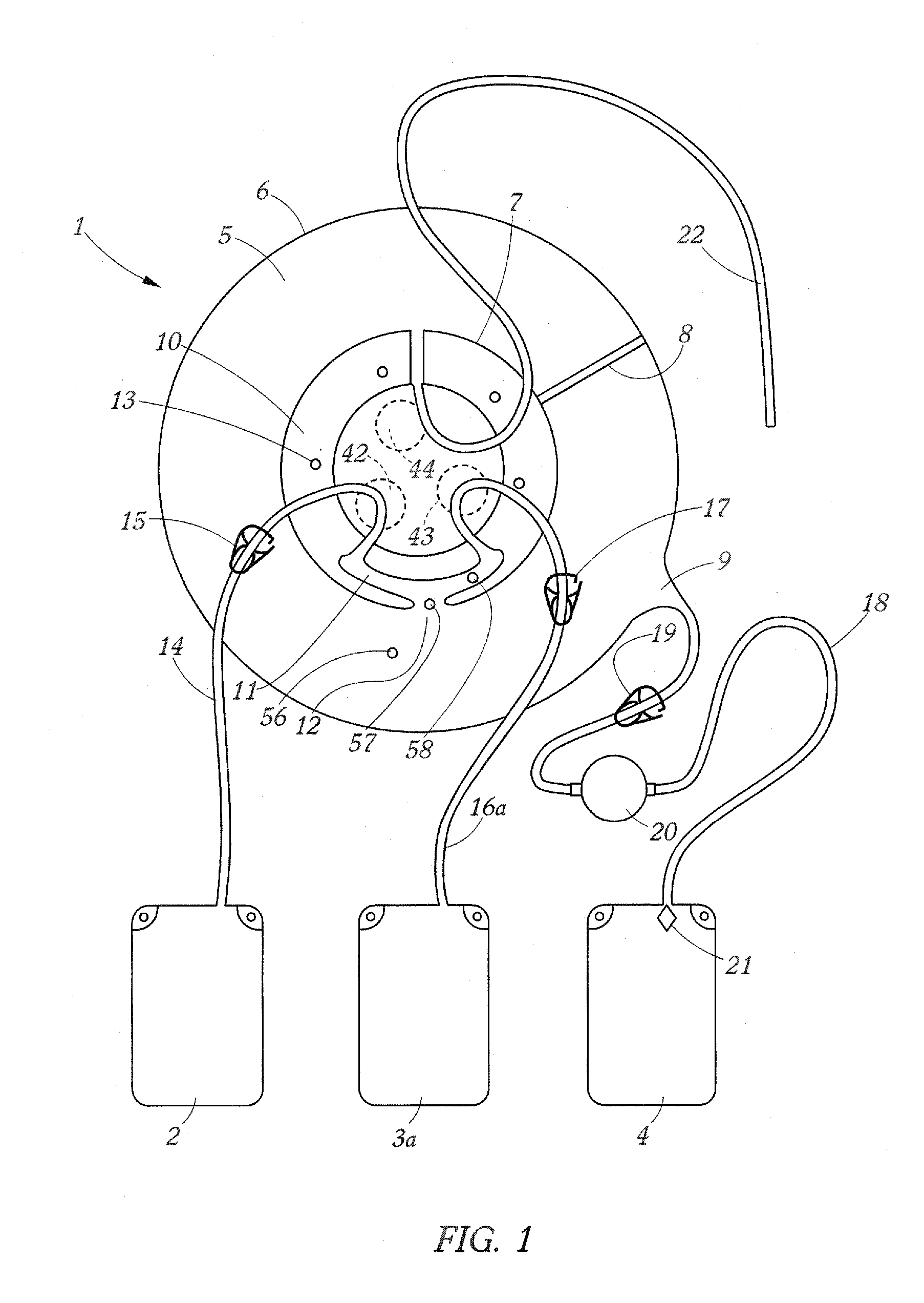Apparatus and Method for Separating a Volume of Whole Blood Into At Least Three Components
- Summary
- Abstract
- Description
- Claims
- Application Information
AI Technical Summary
Benefits of technology
Problems solved by technology
Method used
Image
Examples
Embodiment Construction
[0047]FIG. 1 shows an example of a set of bags adapted to the separation of whole blood into a plasma component (essentially comprising plasma), a red blood cell component (essentially comprising red blood cells and granulocytes) and a mononuclear cell component (comprising monocytes and lymphocytes, as well as plasma, platelets and red blood cells). This bag set comprises a flexible separation bag 1 and three flexible satellite bags 2, 3a, 4 connected thereto. The separation bag 1 comprises a partially annular separation chamber 5 having a substantially circular outer edge 6, an inner circular edge 7 and a radial wall 8 extending from the inner edge 7 to the outer edge 6 so that the chamber 5 has a shape of a broken ring. The outer circular edge 6 and the inner circular edge 7 of the separation chamber 5 are substantially concentric. The separation chamber 5 also comprises a funnel like extension 9 protruding outwardly from its outer edge 6 for helping evacuate a content of the sep...
PUM
 Login to View More
Login to View More Abstract
Description
Claims
Application Information
 Login to View More
Login to View More - R&D
- Intellectual Property
- Life Sciences
- Materials
- Tech Scout
- Unparalleled Data Quality
- Higher Quality Content
- 60% Fewer Hallucinations
Browse by: Latest US Patents, China's latest patents, Technical Efficacy Thesaurus, Application Domain, Technology Topic, Popular Technical Reports.
© 2025 PatSnap. All rights reserved.Legal|Privacy policy|Modern Slavery Act Transparency Statement|Sitemap|About US| Contact US: help@patsnap.com



